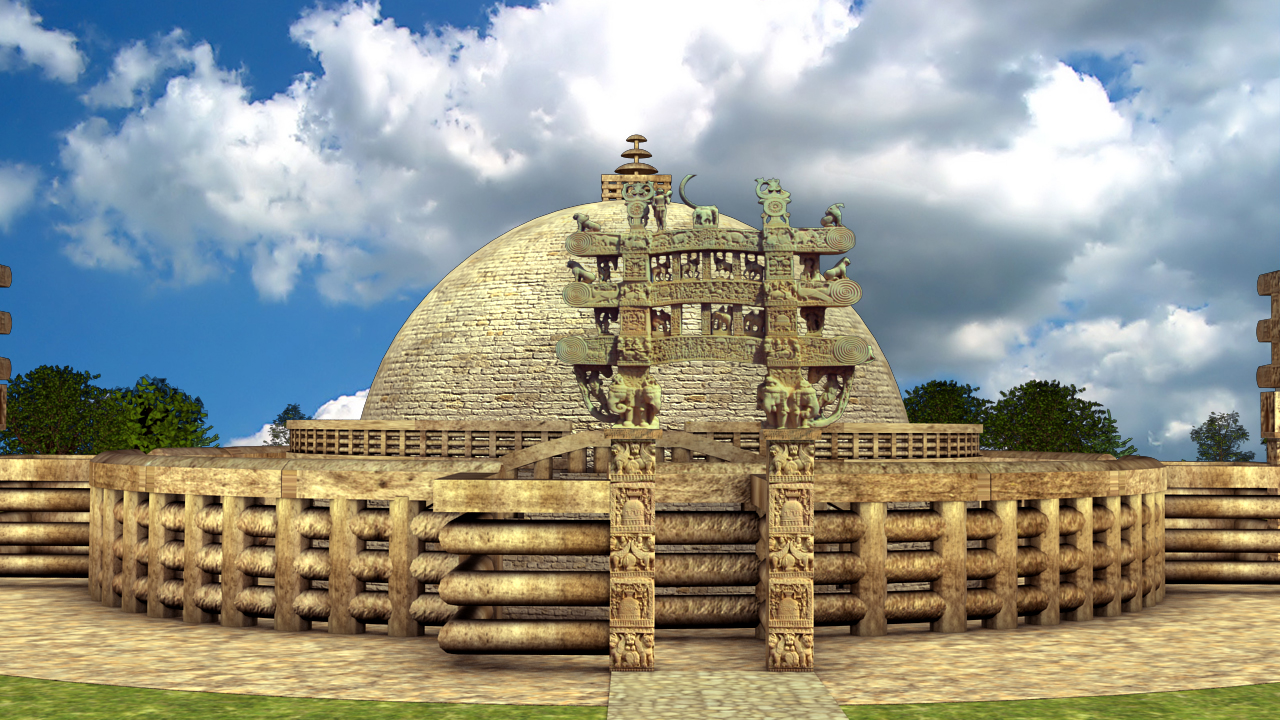

नारायणं नमस्कृत्य नरं चैव नरॊत्तमम
देवीं सरस्वतीं चैव ततॊ जयम उदीरयेत
nārāyaṇaṃ namaskṛtya naraṃ caiva narottamam
devīṃ sarasvatīṃ caiva tato jayam udīrayet
Having bowed down to Narayana and Nara, the most exalted male being,
and also to the goddess Saraswati, must the word "Jaya" be uttered.
- Opening śloka of the Mahabharata
The first civilization to develop in India was built around the Indus River Valley. From 3500 - 1500 BC, it may have been one of the most densely populated parts of the world. The ruins of hundreds of cities have been discovered, the most famous being Mohenjo-daro and Harappa. These cities were centrally planned with multi-story buildings and advanced sanitation including sewage systems and public baths. There is very little evidence of war and few weapons have been discovered. Unfortunately, the Indus Script has never been deciphered, and the Indus Valley Civilization is not the ancestor of any modern culture.
The native population was displaced by Indo-Aryans from the Caucasus around 1750-1500 BC, inaugurating the "Vedic Period," named after the sacred texts of Hinduism (the Rigveda, Yajurveda, Samaveda, and Atharvaveda), which developed during this time. The Vedas are written in Sanskrit, and considered divinely authored by Brahma (similar to Muslim belief about the Qu'ran.) The early Vedic civilization was socially structured into a caste system, with four stratified social groups or "varnas:"
Groups of people outside the caste system altogether were called "Dalits," often translated "Untouchables." This system remained more or less in place until the twentieth century.
The caste system created a very stable society, as it encouraged people to fulfill the duties of their place in the saṃsāra, or the cycle of reincarnation, through which they could acquire enough karma to find to a better place in a future life. Out of Hinduism rose many prominent world religions. The most significant are Jainism (9th to 5th century BC), Buddhism (6th century BC), and Sikhism (15th century AD). Of these, the most influential is Buddhism. Founded by a Hindu prince named Siddhartha Gautama, its philosophy is laid out by the Four Noble Truths and Noble Eightfold Path:
Chandragupta Maurya united most of India under the Maurya Empire in 322 BC. The empire continued to expand under his son Bindusara and grandson Aśoka, eventually extending from Bangladesh in the east to Afghanistan in the west. Aśoka, however, after witnessing the brutality of his own troops in conquering Kalinga (in eastern India), converted to Buddhism and ended the conquests. After this, the empire declined until it was replaced in a coup by the Shunga Dynasty.
The Shunga Dynasty begins the "classical period" of Indian history. Around 30 BC, the Shunga dynasty split, succeeded by the Kushan Empire in the north and the Satavahana Dynasty on the subcontinent. As the influence of these empires waned, many smaller kingdoms emerged, until most of India was again united in the Gupta Empire in 319 AD. The Ramayana by Valmiki and the Mahabharata by Vyasa, which is the longest of the ancient epic poems, reached their final form during this period. The Gupta Empire fell in 543 AD.
Indian music is a unique and richly traditional practice. Commonly, a tambura or similar instrument will sustain a tone while other instruments, such as the bansuri flute or multi-stringed sitar will float on top. Improvisation is common using a raga, one of various types of scale. The rhythm of Indian music is based on a tala, which roughly corresponds to a time signature, although is often quite complex.
Vedic Chanting by Ravi Shankar